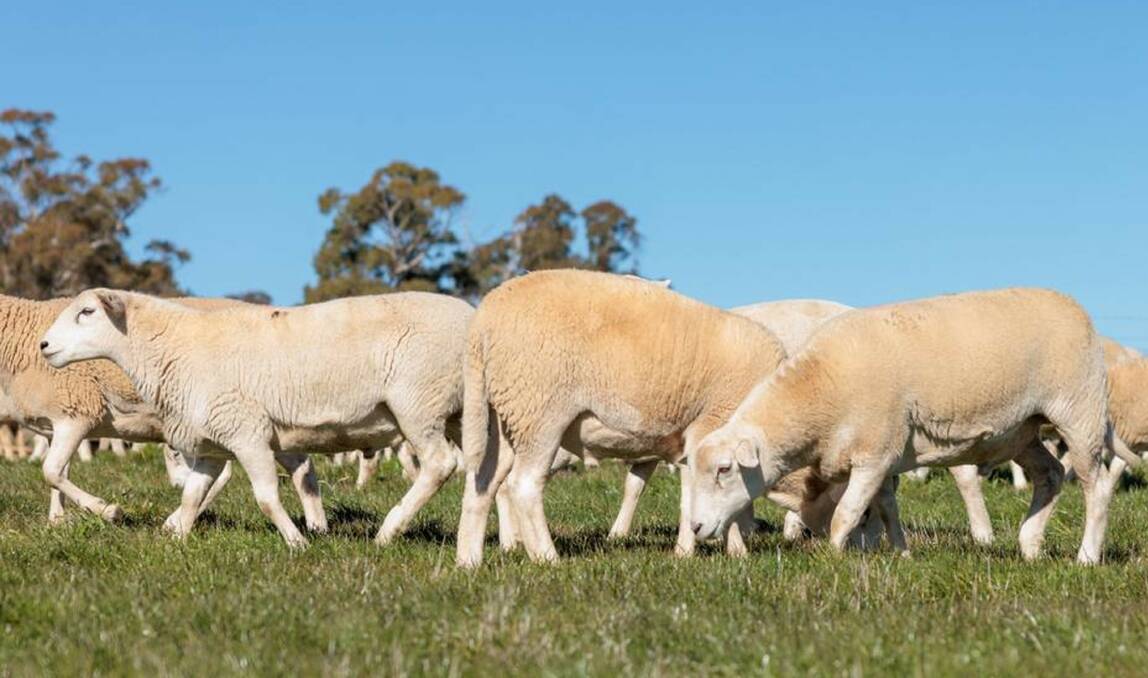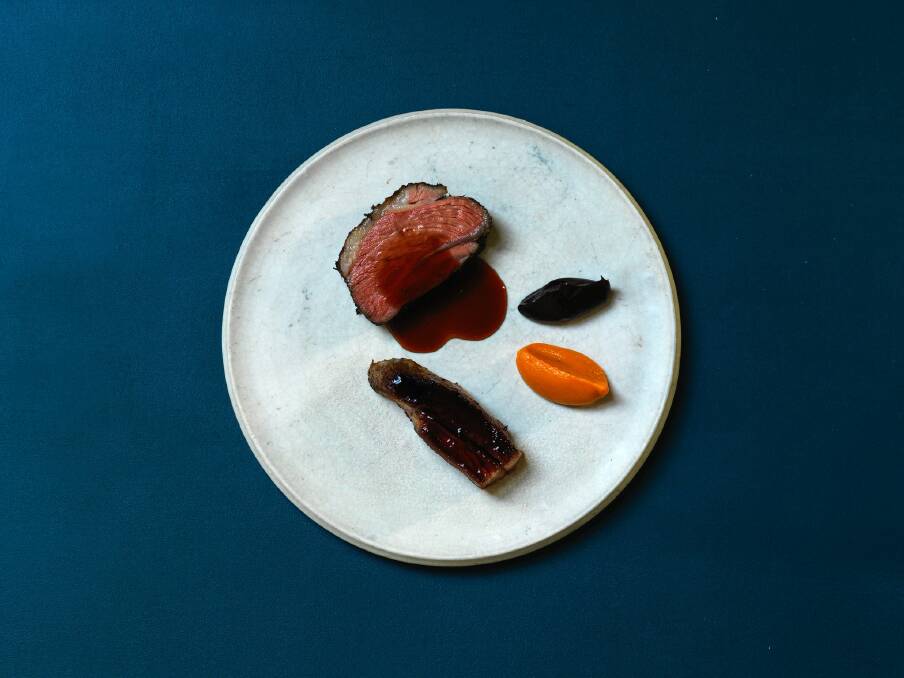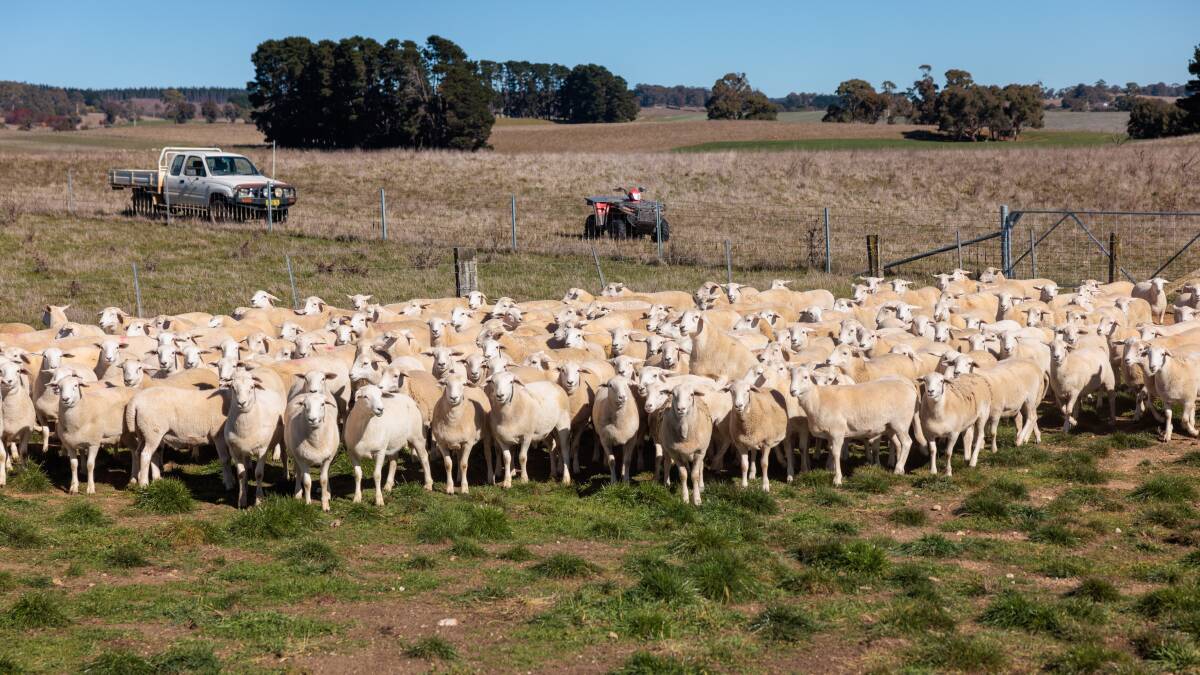Margra makes chefs weak at the knees

This is branded content for Tattykeel Australian White.
It's not lamb.
That's what chefs are saying about Margra lamb. It's something very different - and superb.
The premium Australian White lamb is coming from farms across NSW and Victoria, gracing the dinner tables of diners across Australia and the world.
Top chefs are scrambling to get their hands on the prestigious lamb bred from Tattykeel Australian White stud genetics, Oberon. And for Tattykeel's Graham Gilmore, the sky's the limit.
The marbling and impressive low melting point of the fat in the unique lamb is blowing customers and chefs away.
"That's what a lot of our chefs are saying - we shouldn't be calling it lamb because the fat qualities are quite different to normal lamb," Mr Gilmore said.
"Margra is competing with the top-end proteins in the market - whether that is duck, tuna or Wagyu."
Like nothing else
Jarrod Walsh couldn't agree more.
The head chef at Longshore restaurant in Chippendale has been using Margra for two years, and is now featuring it on the menu of his new Longshore restaurant.

He first heard about it when speaking to his meat supplier about getting a premium lamb in his woodfired restaurant. And when it arrived, he knew he was onto something special.
"It was fantastic. So after that I was like 'I'm not using anything else'," Mr Walsh said.
"It is always consistent, and most of all, the flavours are super easy to work with. You don't have to try and use heaps of heavy marinade or slow-cook it because it is tough. You just cook it straight up. We were even serving the rump raw as a tartare. We had it on the menu for a year as a tartare and people loved it.
"It doesn't have that real lamby flavour because of the way they are bred, so you can get away with serving it raw. With the fat low melting point, it just melts through the whole meat. If you are cooking it medium, the fat starts to render inside, and when you cut it, it is so juicy."
Longshore is dedicated to championing smaller producers, and is also a seafood restaurant.
"I only have two meats on the menu - Wagyu and Margra lamb. And the lamb is outselling the Wagyu," Mr Walsh said.
The Margra lamb is outselling the Wagyu.
- Jarrod Walsh, chef, Longshore restaurant, Chippendale
"It fits into our ethos in the restaurant - using sustainably farmed meat. They use good farming practices that fits in well at Longshore, and that is why it is on our menu."
Far and wide
The beauty of Margra is the lamb can be grazed on country from out west to the coast, and still performs.
"Because of the Margra's genetic traits, we are pulling lamb from many different areas and it's still eating the same off different feed regimes and different climates," Mr Gilmore said.
"That's what is really important to us - in Margra lamb we closely control the genetics."
One of the first steps for Australian White breeders to supply the Margra brand is to become part of the Tattykeel red tag program.
The red tags are reserved for progeny from purebred Australian White ewes joined with Tattykeel rams.
"Once they come into the red tag program, then they can enter the Margra program, provided they meet all the criteria," Mr Gilmore said.
"The merit of a carcase is how it eats - we're averaging above 50 on dressing percentages, which shows good conversion rates. And the other thing is that it eats well. The chef won't serve it if consumers don't want it.

"A lot of branded lamb products might choose the better carcases on the chain - we're sorting this out on the hoof. We have a procurement team that travels and selects animals on live weight and assessment on carcase shape and fat cover. We are chasing fat cover - we're happy to have the fat to have the quality."
And the fat is something else.
"The difference is you don't have the aftertaste of lamb fat in your mouth," Mr Gilmore said.
"It was a fluke that we stumbled upon it with the mix of breeds, but once we found it, we've spent a lot of years testing and now DNA testing for it. It means we can send it into Los Angeles, Singapore, Brisbane or Adelaide and you get a consistent result. If you want it to taste like normal lamb, that's not us."
Hitting the mark
The fact Australian Whites are polyestrous is also a winner.
"We've got a constant supply of five to seven-month-old lambs to go into this product," Mr Gilmore said.
"We're wanting lambs that are about 28 kilograms, and that means at between five to seven months you can hit those markets. It means people are getting rid of them reasonably early. Most of these lambs are coming off with no feeding at all.
"The odd lamb might have to be supplemented at different times in the year, but they are still coming off grass, and that is a huge advantage for us."
This is branded content for Tattykeel Australian White.


